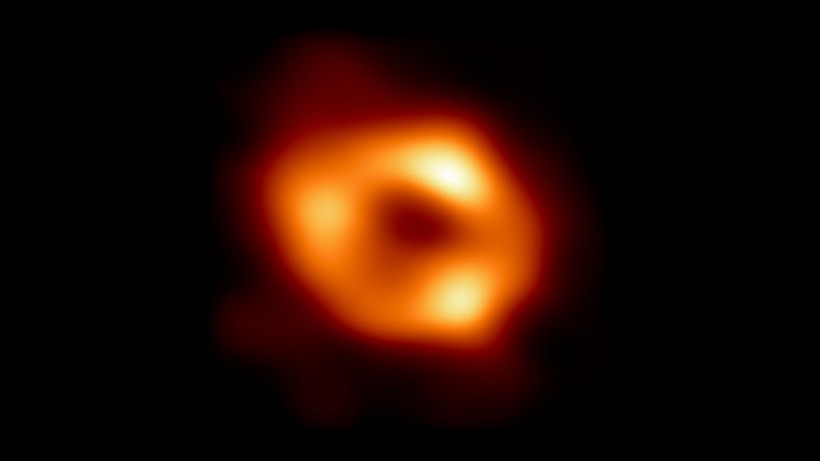Scientists have made a remarkable discovery of an eerie echo emanating from the supermassive black hole at the heart of the Milky Way, which is approximately four million times more massive than the Sun.
According to MailOnline, it is characterized by both high and low notes, signifying an immensely active phase that occurred around 200 years ago when the previously dormant black hole came to life and devoured surrounding gas and dust.

In this handout photo provided by NASA, This is the first image of Sgr A*, the supermassive black hole at the centre of our galaxy, with an added black background to fit wider screens.
Intense Period of Activity in the Black Hole
Researchers from the Astronomical Strasbourg Observatory in France successfully captured substantial amounts of radiation emitted by Sagittarius A* (Sgr A*) as it reflected off clouds in the Galactic Center, the central region of our galaxy.
These observations provide an explanation for the enhanced brightness of galactic molecular clouds located near Sgr A*, situated approximately 25,640 light-years away from Earth.
Researchers from the National Center for Scientific Research (CNRS) said that the acoustic phenomenon is associated with the intense activity of Sgr A*. As per Study Find's report, the black hole consumed large amounts of gas and dust in the past, causing brilliant X-ray light bursts. These bursts produced echoes that can be translated into sound waves on Earth.
Dr. Frederic Marin, the corresponding author of the study, explains that this discovery provides evidence of a previous awakening of the massive black hole. It offers insights into the dynamic nature of supermassive black holes, which are dense regions at the centers of galaxies with strong gravitational forces that draw in surrounding material.
The research also explains the heightened brightness of galactic molecular clouds near the black hole, which reflect X-rays emitted by the black hole approximately 200 years ago.
The international team of scientists combined data from the IXPE space telescope and the Chandra X-ray Observatory for their study. The polarization angle of the X-ray emission indicates that it originates from Sgr A*, the supermassive black hole at the center of the Milky Way.
Further investigations will focus on understanding the physical mechanisms that drive the transition of a black hole from a dormant to an active state, shedding light on the behavior of these mysterious cosmic entities.
Learning More About Milky Way's Black Hole
According to Universe Today, the research team, led by Dr. Marin, aims to gather more information about the significant flare that emitted the detected emissions from Sgr A*. They seek to determine the precise timing, peak intensity, and duration of the flare through follow-up observations. These observations will also provide astronomers with a three-dimensional perspective of the glowing clouds surrounding the black hole.
One of the fundamental mysteries regarding such flares is understanding their underlying causes. While the infall of material is recognized as a contributing factor, there are other unknown factors at play that trigger the awakening and feeding behavior of Sgr A*.
NASA's IXPE (Imaging X-ray Polarimetry Explorer) project scientist, Steven Ehlert, emphasizes the mission's role in unraveling the timescale and behavior of the black hole at the center of our galaxy. By studying its history of outbursts and observing further changes, scientists hope to distinguish typical patterns from unique phenomena.
RELATED ARTICLE: 8 New Echoing Black Hole Binaries Discovered In Milky Way Galaxy: Listen to the Eerie Sounds They Make
Check out more news and information on Space in Science Times.














